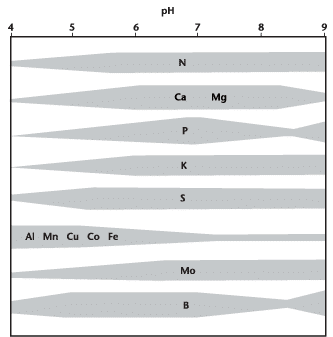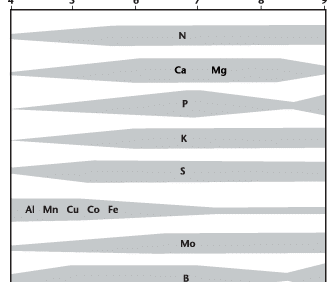When submitting samples to the soil lab, ask the lab to provide an organic matter (OM) analysis, and ask whether the lab considers OM when setting fertilizer recommendations. Soil with high OM can release a high amount of plant available nitrogen throughout the year. The amount released each year varies. High moisture and high temperature tend to increase mineralization rates, which may explain why, with good moisture and warm weather this past summer, some growers who fertilized for 40 bushel crops were surprised to harvest 50 bushel crops.
Soil organic nitrogen levels in the top 6” of soil can range from 2,500 to 7,500 pounds per acre. Around 1% to 3% of that soil organic N mineralizes and becomes available for plant uptake each year. If soil has 5,000 pounds of soil organic nitrogen in the top 6”, it could provide anywhere from 50 to 150 pounds of nitrogen to the crop using those numbers. These numbers are from the article “Nitrogen Mineralization: What’s Happening in Your Soil?” by Fran Walley from the U of S Department of Soil Science. Here is a PDF of Walley’s full article: Fran Walley – Nitrogen Mineralization 2005 Canola College
Many herbicides are also broken down by microbes or water, so high OM soil that can hold more moisture and house more microbes can have more rapid herbicide breakdown.
Click here for more on organic matter.
Other tests to consider
Soil pH. Soil pH will influence nutrient availability, especially phosphorus. Phosphorus availability is highest at a soil pH around 6.5 and drops as pH gets lower or higher than that point. Adequate phosphorus fertilizer is important for all crops, but precise placement where seedlings can access it easily is especially important with pH below 5.5 or above 7.0.
Careful when comparing pH results from different sources. Soil pH listed in soil survey (and often research) reports is based on a saturated paste test — where enough water is added to the soil to saturate it without leaving any free water. This more closely approximates the pH at the root surface. Not all soil test lab do the saturated paste test. Some use a simpler 1:1 or 2:1 soil to water ratio, which produces a pH reading about 0.5 units higher than the saturated paste test.

Electrical conductivity. Soil labs use EC tests to measure salinity. The higher the salinity, the higher the conductivity of that soil. Greenhouse studies at AAFC in Swift Current found that soil with an EC above 5.6 deciSiemens per metre will reduce canola plant survival. This is in the “moderately saline” range. As with pH, labs will often use a simple 1:1 or 2:1 soil to water ratio for the EC test. This produces an EC salinity measurement that is about half the amount of the saturated paste test used for soil surveys.
Cation exchange capacity. CEC is a measure of a soil’s ability to hold on to key positively charged nutrients, such as calcium, magnesium and potassium, and keep them close for when the crop needs them. Soils with high clay and high organic matter tend to have a high CEC, so these soils are more likely to have an adequate supply of these nutrients on hand. A CEC of 1 milligram of hydrogen equivalent (meq) per 100 grams of soil is very low. CEC is ideally between 10 and 30 meq/100g.
